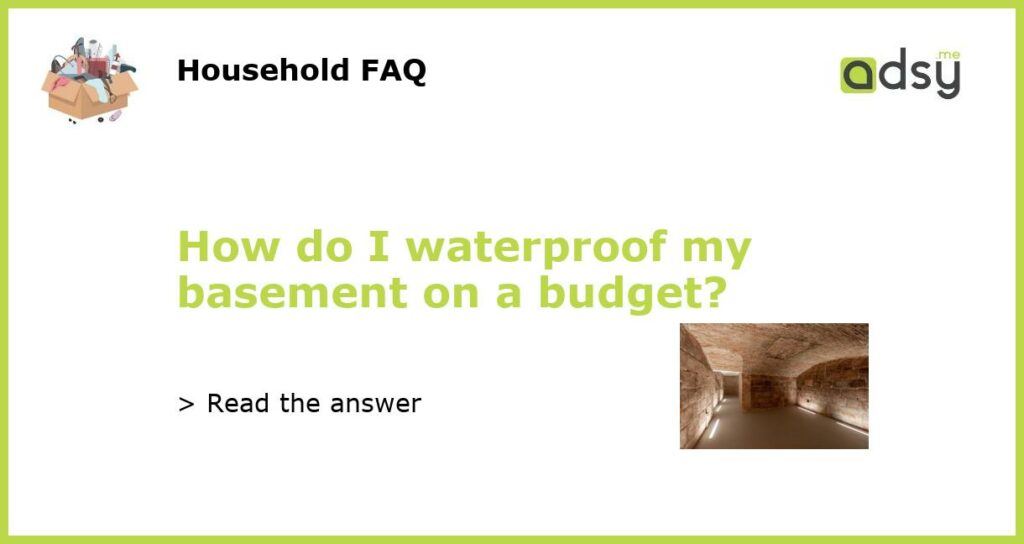Assess the Source of the Water Leakage
The first step to waterproofing your basement on a budget is to assess the source of the water leakage. This will help you understand the extent of the problem and identify the solutions that fit your budget.
Start by examining the exterior of your home. Look for any cracks or gaps in the foundation walls, windows, or doors that could be letting water in. Check the gutters and downspouts for any blockages that could be causing water to overflow and seep into your basement.
Next, inspect the interior of your basement. Look for signs of water damage such as damp walls, peeling paint, or musty smells. Pay attention to areas where the floor and walls meet, as this is a common area for water to enter.
Seal Cracks and Gaps
Once you’ve identified the source of the water leakage, the next step is to seal any cracks and gaps in your basement walls and floors. This is a cost-effective solution that can help prevent water from entering your basement.
For small cracks, you can use hydraulic cement or a concrete patching compound to fill them in. This will help create a barrier that prevents water from seeping through. Make sure to follow the manufacturer’s instructions for application and drying time.
If you have larger cracks or gaps, you may need to use an epoxy injection. This process involves injecting epoxy into the cracks to create a strong and durable seal. It’s best to hire a professional for this task, as they will have the expertise and equipment needed to do the job correctly.
Improve Drainage Around Your Home
Another budget-friendly way to waterproof your basement is to improve the drainage around your home. Proper drainage can help divert water away from your foundation, reducing the risk of water entering your basement.
Start by ensuring that your gutters and downspouts are clean and free of debris. This will allow rainwater to flow freely and prevent it from overflowing and causing water to pool near your foundation.
You can also extend your downspouts away from your home, directing the water to a well-drained area or a rain garden. Additionally, consider grading the soil around your home’s foundation so that it slopes away from the house. This will help prevent water from pooling near your basement walls.
If you have a sump pump, make sure it’s working properly. A sump pump can help keep your basement dry by removing any excess water that may accumulate during heavy rainstorms.
Apply Waterproofing Paint
Applying waterproofing paint to your basement walls and floors is another cost-effective way to protect your basement from water damage. Waterproof paint forms a barrier that prevents water from seeping through the walls and causing moisture problems.
Prior to applying the paint, it’s important to clean and prep the walls. Remove any loose or peeling paint, as well as any mold or mildew. Then, fill in any cracks or gaps with a concrete patching compound and allow it to fully dry. Finally, apply the waterproofing paint according to the manufacturer’s instructions.
Keep in mind that waterproofing paint is not a permanent solution and may need to be reapplied every few years, depending on the conditions in your basement.
Install a French Drain System
If you have a severe water leakage problem in your basement and have a larger budget, installing a French drain system can be an effective solution. A French drain is a trench filled with gravel and a perforated pipe that collects and redirects water away from your foundation.
To install a French drain, you’ll need to excavate a trench around the perimeter of your basement floor. This trench should slope downward and lead to a sump pump or a drain pipe that carries the water away from your home. The trench is then filled with gravel and the perforated pipe is placed on top. Finally, the trench is covered with more gravel and backfilled.
Installing a French drain system can be a complex and labor-intensive process, so it’s best to hire a professional for this job. They will have the expertise and equipment needed to ensure the system is installed correctly and effectively.






